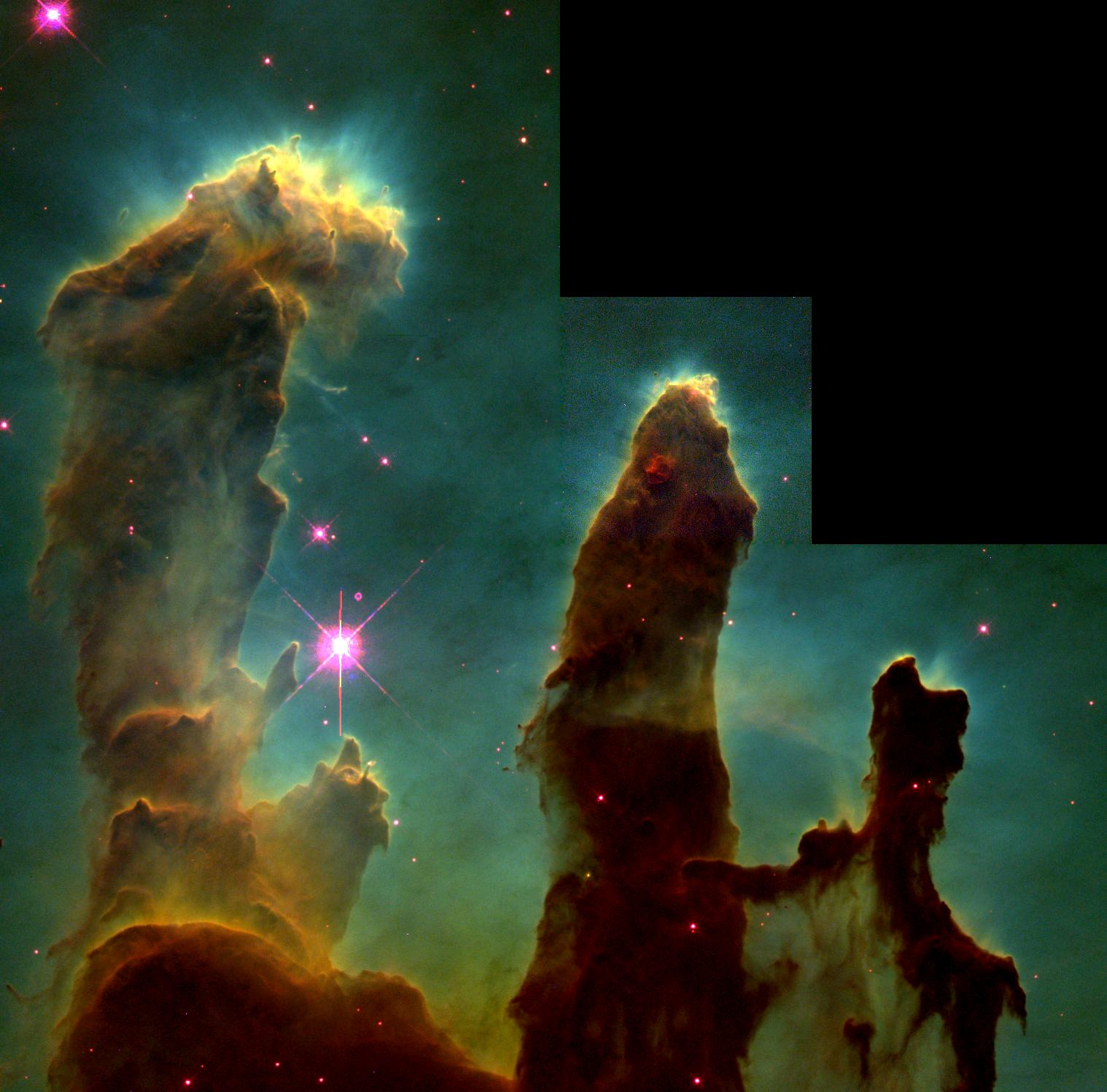
APOD 3.8 M16: Pillars of Creation
M16, also known as the Eagle Nebula, is one of the most famous images ever to come out of the Hubble Telescope. Taken in 1995 by Hubble, it was recently captured by the Chandra X-ray Observatory. The picture is still fascinating. The pillars are light years in length and at the ends of each pillar are thousands of young star nursuries. The nubula is 7,000 light years away and in the constellation of Serpens.




